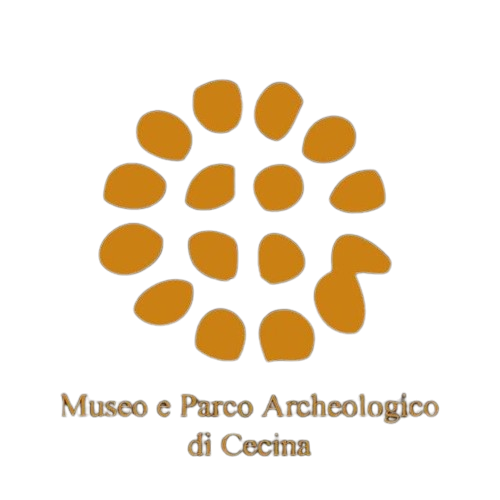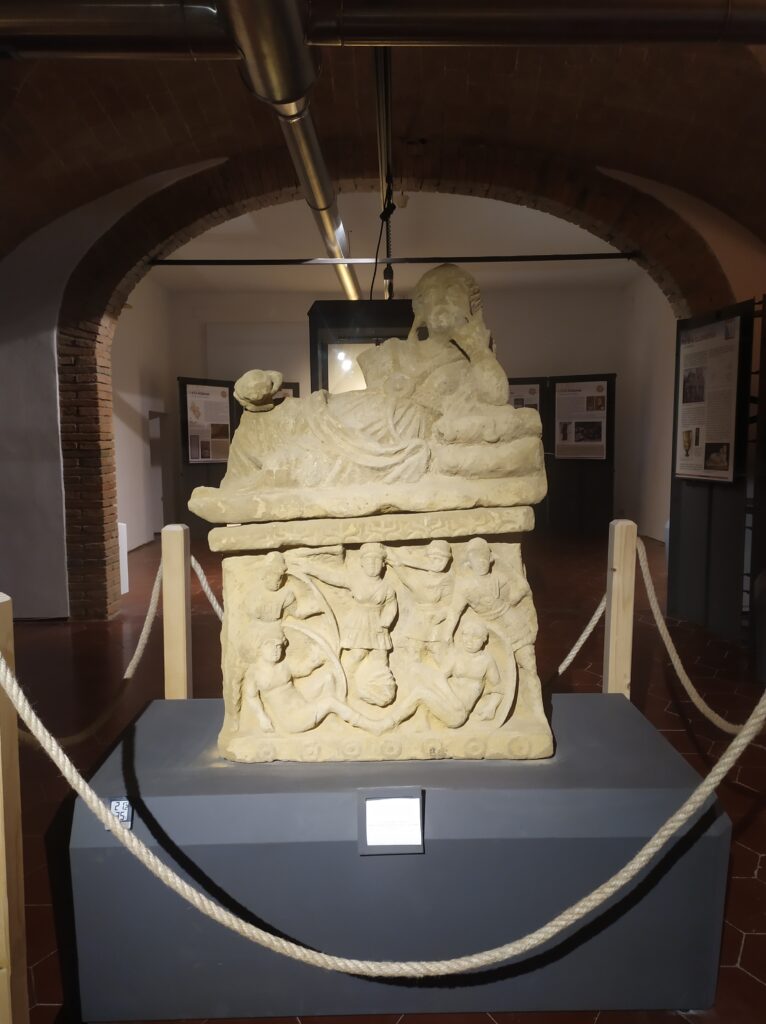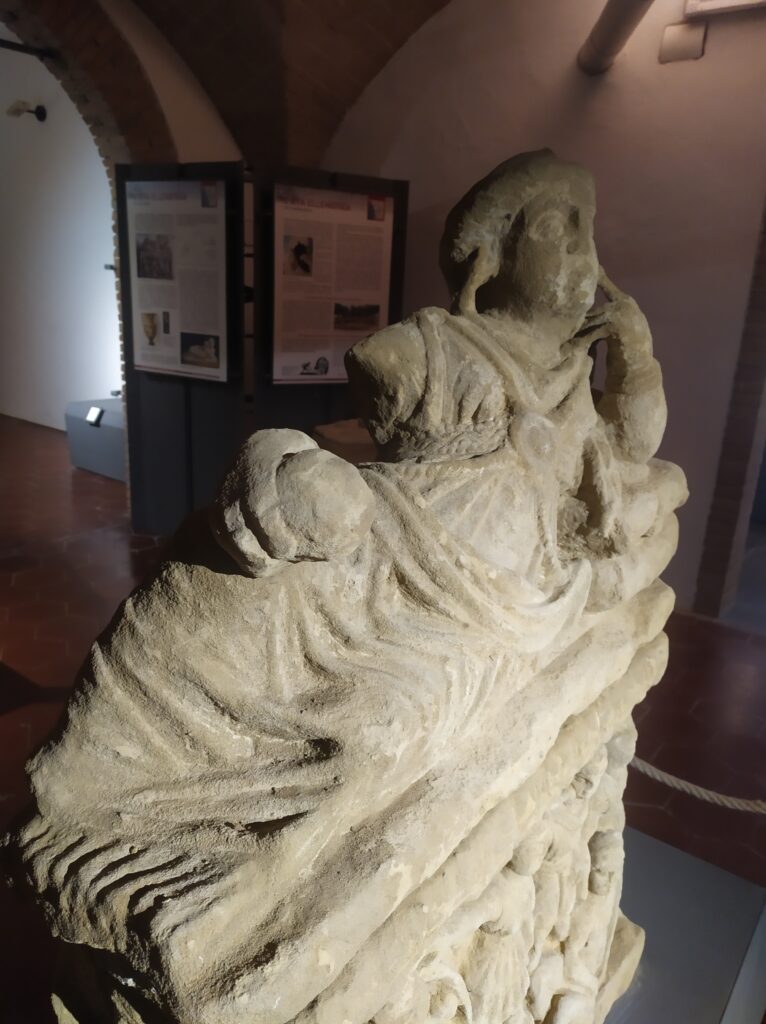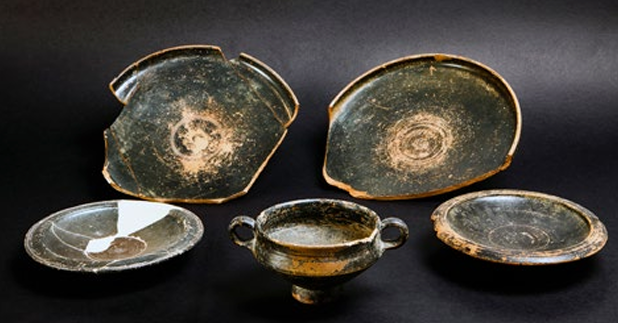
Hall VIII | 8
Volterra plays a leading role in this phase, thanks to the economic resources of its vast territory and strong demographic growth.
Volterra plays a leading role in this phase, thanks to the economic resources of its vast territory and strong demographic growth.
Between the end of the 4th and the beginning of the 3rd century. B.C. a new circle of walls was built, which, thanks to a curtain approximately 7 kilometers long, encloses an area of over 100 hectares, the largest among the cities of Etruria. In 295 BC the Roman victory in the battle of Sentino, fought in the current Marche region against an army composed of Etruscans and Gauls, is decisive for the future of the entire Italian peninsula: the cities of Etruria lose their independence, while Rome definitively establishes itself as the main power of the Italian peninsula.
The positive repercussions of these political changes are evident throughout the territory of Volterra and, in particular, in the Cecina valley, which, even in this phase, is increasingly “Volterra’s door to the world”, the main commercial route which links the city to the Mediterranean and to the new markets opened by Rome’s conquests.
A “small country aristocracy” takes root in Cecina valley, favoring a series of strategic settlements for its agricultural exploitation and control. Among the most important centers of this true colonization implemented by Volterra itself, there are Bibbona, Casalvecchio and Belora, settlements located on small hills that dominate the territory and which, using a definition by the Roman historian Livio, they can be defined as castles.
Visitors are introduced to the different facets of the everyday life of these settlements through the variety of finds from the excavation sites of Riparbella and Casale Marittimo. The pieces on display range from tools used on a regular basis at work or at home, to the funereal equipments of rich aristocratic families.
The wealth of the aristocratic classes who resided on the nearby hill of Belora, along the northern bank of the Cecina, was notable. Our knowledge of the area is limited, where excavations conducted in 1986 by the Archaeological Superintendence of Tuscany brought to light a cistern and a network of water pipes.
Among the few finds that escaped centuries of looting and clandestine excavations are the remains of precious crowns composed of gold leaves and a flower (diadema) in the center, inspired by the crowns worn by the Macedonian kings and the sovereigns of the Hellenistic kingdoms that succeeded Alexander Magnus. The specimen exhibited in the Museum is reconstructed with elements belonging to several specimens dating back to the 3rd-2nd century. B.C.
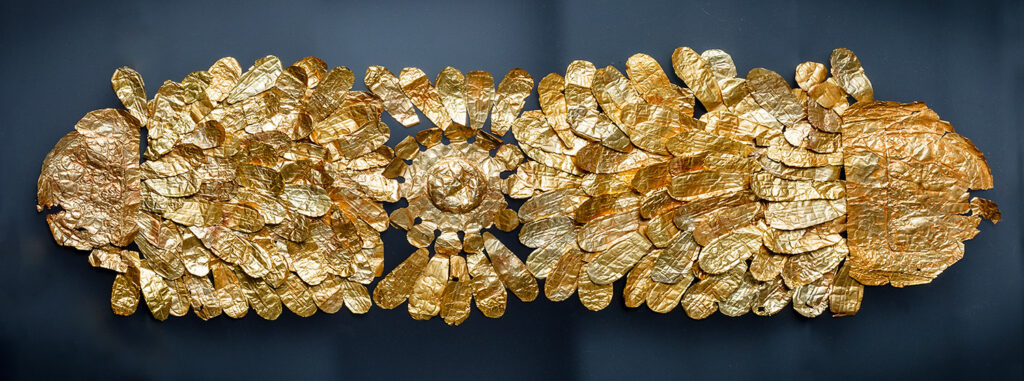
Characteristic of the Volterra area is the production of urns in alabaster, stone and, more rarely, terracotta. During the 3rd century BC the lid with a double-pitched roof, used since the 6th century. BC, is replaced by a new type, on which the figure of the deceased lying on the bed appears. The deceased, usually resting on his left side, is portrayed taking part in a symposium, crowned with flowers and holding vases in one of his hands for drinking wine or fruit.
The urn in center of the room was found in the 1960s in tomb 61/4 of the Badia di Volterra necropolis. The casket, made from a calcareous stone, is characterized by the representation of the legendary fight between Eteocles and Polynices on the main face. On the short right side, normally not sculpted, a winged deity appears holding an unlit torch pointing downwards, a symbol of death itself. On her lid appears the figure of the deceased, resting on a pillow with her left elbow. The woman, who rests her index finger on her left cheek, wears a belt with a tiara on her dress. Her right hand holds a pomegranate.
The dimensions are also exceptional; the casket, measuring 90 x 31 x 52 centimetres, is much larger than that of a common Volterra urn.
The urn, which can be dated to the 2nd century, despite its particularities, belongs to an underground chamber tomb, a type common in the Hellenistic age (4th-1st century BC) within the families of the Volterra’s aristocracy. Tombs of this type are found, as well as in the city’s necropolises, in the territory, in particular along the Cecina valley, a passageway that put Volterra in contact with the Mediterranean.
Listen to the audio guide
Hall VIII
Part I (2:08)
Part II (2:49)
The audio guide was produced in collaboration with UniTre Cecina A.P.S
We would especially like to thank Luisella Ragoni (Vice President UniTre Cecina A.P.S.) and Sally Tunley (native speaker and English teacher at UniTre Cecina A.P.S.) for their helpfulness and professionalism, which were essential to the creation of this new tool for accessibility to Cecina’s archaeological heritage.
